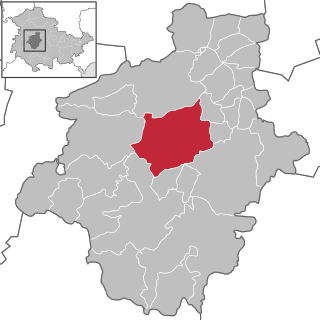Royal Prussian Jagdstaffel 13 was a World War I "hunting group" of the Luftstreitkräfte, the air arm of the Imperial German Army during World War I. The unit would score 108 aerial victories during the war, at the expense of twelve killed in action, one killed in a flying accident, two wounded in action, and two taken prisoner of war.
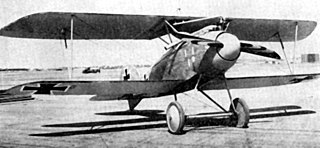
Royal Prussian Jagdstaffel 26 was a "hunting group" of the Luftstreitkräfte, the air arm of the Imperial German Army during World War I. As one of the original German fighter squadrons, the unit would score 177 verified aerial victories, including four observation balloons destroyed. The Jasta would pay a bloody price for its success: five pilots killed in action, nine wounded in action, and one prisoner of war.

Royal Prussian Jagdstaffel 29, commonly abbreviated to Jasta 29, was a "hunting group" of the Luftstreitkräfte, the air arm of the Imperial German Army during World War I. The squadron would score 76 aerial victories during the war, at the cost of 13 of their pilots killed in action, two killed in flying accidents, 12 wounded in action, one injured in a flying accident and one taken prisoner.
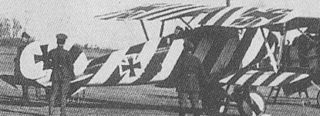
Royal Prussian Jagdstaffel 39, commonly abbreviated to Jasta 39, was a "hunting group" of the Luftstreitkräfte, the air arm of the Imperial German Army during World War I. The unit would score 68 aerial victories during the war, including 14 observation balloons downed. The squadron's victories came at the expense of seven pilots killed in action, one killed in a flying accident, five wounded in action, and one taken prisoner of war.
Royal Prussian Jagdstaffel 43, commonly abbreviated to Jasta 43, was a "hunting group" of the Luftstreitkräfte, the air arm of the Imperial German Army during World War I. The unit would score over 35 aerial victories during the war, including two observation balloons downed. The squadron's victories came at the expense of six killed in action, five wounded in action, two injured in accidents, and one taken prisoner of war.
Royal Württemberg Jagdstaffel 47, commonly abbreviated to Jasta 47 or Jasta 47W, was a "hunting group" of the Luftstreitkräfte, the air arm of the Imperial German Army during World War I. Incomplete records credit the squadron with 14 aerial victories during the war. The unit's known casualties include three killed in action, one injured in a flying accident, three wounded in action, and one taken prisoner of war.
Royal Prussian Jagdstaffel 53, commonly abbreviated to Jasta 53, was a "hunting group" of the Luftstreitkräfte, the air arm of the Imperial German Army during World War I. The squadron would score over 20 aerial victories during the war. The unit's victories came at the expense of one pilot killed in a flying accident, another injured in an accident, one wounded in action, and four taken prisoner of war.
Royal Prussian Jagdstaffel 57, commonly abbreviated to Jasta 57, was a "hunting group" of the Luftstreitkräfte, the air arm of the Imperial German Army during World War I. The squadron would score over 32 aerial victories during the war. The unit's victories came at the expense of four pilots killed in action, one injured in a flying accident, four wounded in action, and one taken prisoner of war.
Royal Prussian Jagdstaffel 58, commonly abbreviated to Jasta 58, was a "hunting group" of the Luftstreitkräfte, the air arm of the Imperial German Army during World War I. The squadron would score 24 aerial victories during the war, including nine observation balloons downed. The unit's victories came at the expense of five killed in action, two wounded in action, and one injured in an aviation accident.

Royal Prussian Jagdstaffel 59, commonly abbreviated to Jasta 59, was a "hunting group" of the Luftstreitkräfte, the air arm of the Imperial German Army during World War I. The squadron would score over 20 aerial victories during the war. The unit's victories came at the expense of four pilots killed in action and two wounded in action.
Royal Prussian Jagdstaffel 60, commonly abbreviated to Jasta 60, was a "hunting group" of the Luftstreitkräfte, the air arm of the Imperial German Army during World War I. The squadron would score over 52 aerial victories during the war, including seven observation balloons downed. The unit's victories came at the expense of six pilots killed in action, three wounded in action, one injured in a flying accident, and two taken prisoner of war.
Royal Prussian Jagdstaffel 63, commonly abbreviated to Jasta 63, was a "hunting group" of the Luftstreitkräfte, the air arm of the Imperial German Army during World War I. The squadron would score 16 aerial victories during the war. The unit's victories came at the expense of seven pilots killed in action, and one killed in a flying accident.
Royal Württemberg Jagdstaffel 64, commonly abbreviated to Jasta 64, was a "hunting group" of the Luftstreitkräfte, the air arm of the Imperial German Army during World War I. The squadron would score 20 or more aerial victories during the war. The unit's victories came at the expense of three wounded in action, and three taken prisoner of war.
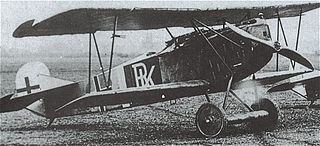
Royal Prussian Jagdstaffel 66, commonly abbreviated to Jasta 66, was a "hunting group" of the Luftstreitkräfte, the air arm of the Imperial German Army during World War I. The squadron would score over 97 aerial victories during the war, including seven observation balloons downed. The unit's victories came at the expense of five pilots killed in action, one who died in captivity, and two taken prisoner of war.
Royal Prussian Jagdstaffel 69, commonly abbreviated to Jasta 69, was a "hunting group" of the Luftstreitkräfte, the air arm of the Imperial German Army during World War I. The squadron would score 15 aerial victories during the war, including two observation balloons downed. The unit's victories came at the expense of one pilot killed in action, three killed in flying accidents, one wounded in action, and three taken prisoner of war.
Royal Prussian Jagdstaffel 71, commonly abbreviated to Jasta 71, was a "hunting group" of the Luftstreitkräfte, the air arm of the Imperial German Army during World War I. The squadron would score eight aerial victories during the war, including three observation balloons downed. The unit's victories came at the expense of four killed in action and one wounded in action.
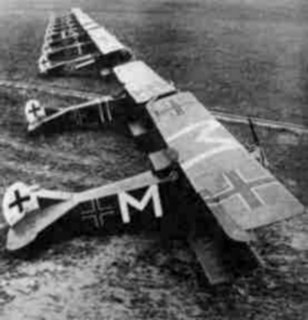
Royal Saxon Jagdstaffel 72, commonly abbreviated to Jasta 72, was a "hunting group" of the Luftstreitkräfte, the air arm of the Imperial German Army during World War I. The squadron would score over 58 aerial victories during the war, including three observation balloons downed. The unit's victories came at the expense of two killed in action, one wounded in action, and one taken prisoner of war.
Royal Prussian Jagdstaffel 73, commonly abbreviated to Jasta 73, was a "hunting group" of the Luftstreitkräfte, the air arm of the Imperial German Army during World War I. squadron would score 29 aerial victories during the war, including seven night victories, and including an observation balloon downed. The unit's victories came at the expense of three killed in action.
Royal Bavarian Jagdstaffel 76, commonly abbreviated to Jasta 76, was a "hunting group" of the Luftstreitkräfte, the air arm of the Imperial German Army during World War I. The squadron would score over 20 aerial victories during the war. The unit's victories came at the expense of six killed in action, four wounded in action, and three taken prisoner of war.

Royal Prussian Jagdstaffel 81, commonly abbreviated to Jasta 81, was a "hunting group" of the Luftstreitkräfte, the air arm of the Imperial German Army during World War I. The squadron would score six or more aerial victories during July/August 1917, while serving on the Eastern Front. After switching to the Western Front, Jasta 81 would score another 35 victories from May 1918 to war's end. The unit's victories came at the expense of five killed in action, three killed in flying accidents, one injured in a flying accident, three wounded in action, and three taken prisoner of war.



